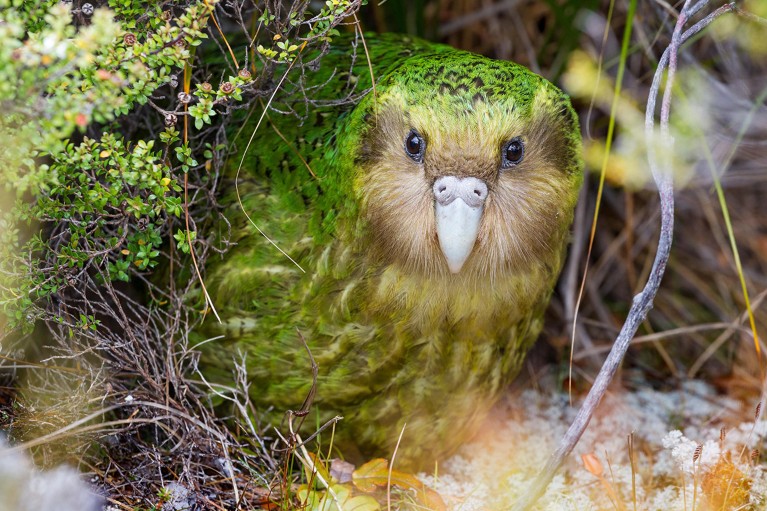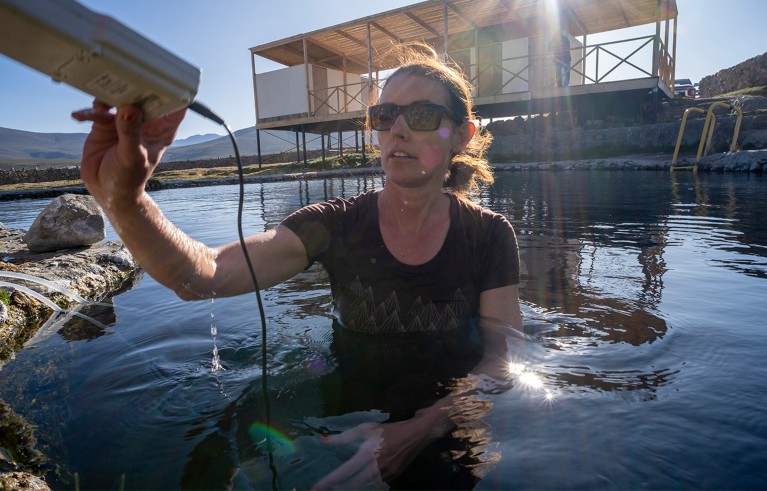Hello Nature readers, would you like to get this Briefing in your inbox free every day? Sign up here.

Conservation efforts have brought the kākāpō (Strigops habroptila) from the brink of extinction to a population of 252.Credit: Brent Stephenson/NPL via Alamy
There are only around 250 kākāpō (Strigops habroptilus) left, and most of them have now had their genomes sequenced. A team of researchers has sequenced the genomes of 169 of the flightless New Zealand parrots, from both living individuals and stored samples. At the time, this represented nearly the entire kākāpō population — which is thankfully on the rise. “We have managed to associate genetic variation with observed traits, like growth, and can predict how that trait should be reflected in offspring, allowing us to identify problems earlier and prioritize vet treatment,” says biochemist Peter Dearden, who led the effort.
Nature | 3 min read
Reference: Nature Ecology & Evolution paper
The US government has extended for six months a non-binding, but symbolically important, agreement to cooperate with China in science and technology. The countries normally recommit every five years to the agreement, which was first signed in 1979. Now the United States says it will seek to amend the deal, but some lawmakers in the country would like to scrap it altogether. A letter supporting the agreement has been signed by more than 1,000 academics. “Much of the physics that I think about is based on experimental work that is done in China,” says theoretical physicist Steven Kivelson, who co-authored the letter. “The entire field is highly dependent on and benefits from cooperation with colleagues in China.”
Nature | 4 min read
Rapid advances in artificial intelligence (AI) have many researchers pondering the prospect of AI one day becoming conscious. But how would we know if it was? A group of neuroscientists, philosophers and computer scientists has proposed a checklist of criteria for determining whether a system is likely to be conscious. Instead of putting an AI system through a behavioural test, the researchers suggest using the checklist, which draws on several competing theories of consciousness.
Nature | 4 min read
Reference: ArXiv preprint (not peer reviewed)
Features & opinion
Table of Contents
Bioengineer Ram Sasisekharan says he was “blindsided” when a reporter at The Wall Street Journal flagged him to research-misconduct allegations against him. After a four-year investigation by the Massachusetts Institute of Technology, which ultimately cleared him, he says the secretive process was agonizing for his research, his laboratory group and his reputation. “It was terrible to see how the lab suffered as a consequence of these very public allegations,” he says. “There was this dark cloud hanging over us because we just couldn’t talk about it openly or defend ourselves.”
Nature | 9 min read
Computer scientist and physicist Edward Fredkin, who died in June, had an unconventional academic background: he became a full professor at the Massachusetts Institute of Technology, despite never having finished his undergraduate degree. Fredkin said that his lack of a typical education in physics helped him to arrive at his distinctive views: that the laws of physics, and indeed those of the Universe itself, are essentially the result of a computer algorithm. Science writer David Chandler explores Fredkin’s outsize influence on quantum computing, AI research and the conceptual approach known as ‘digital physics’.
Nature | 9 min read
We must get better at predicting how wildfires rip through towns and cities, writes infrastructure researcher Hussam Mahmoud. Better modelling could help scientists to understand how fire interacts with varying layouts, building materials and vegetation under different weather and wind conditions. Combined with good data from real-world towns, these models could help policymakers decide how to implement fire-mitigation measures. “They could allow officials to understand, for example, how hardening one home or removing one tree would affect the vulnerability of another home or tree down the road,” he suggests.
Nature | 5 min read
Where I work

Karen Lloyd is a geomicrobiologist at the University of Tennessee in Knoxville.Credit: Jacopo Pasotti for Nature
Geomicrobiologist Karen Lloyd explores the roles of microorganisms that dwell in the planet’s most remote regions. “In this image from March 2022, I am in a Chilean village where locals had built a pool around a natural hot spring,” she says. “Everywhere we sample water, we share our data — on temperature, pH levels and alkalinity, for example — with the communities, providing valuable information on hot-spring safety.” (Nature | 3 min read)
